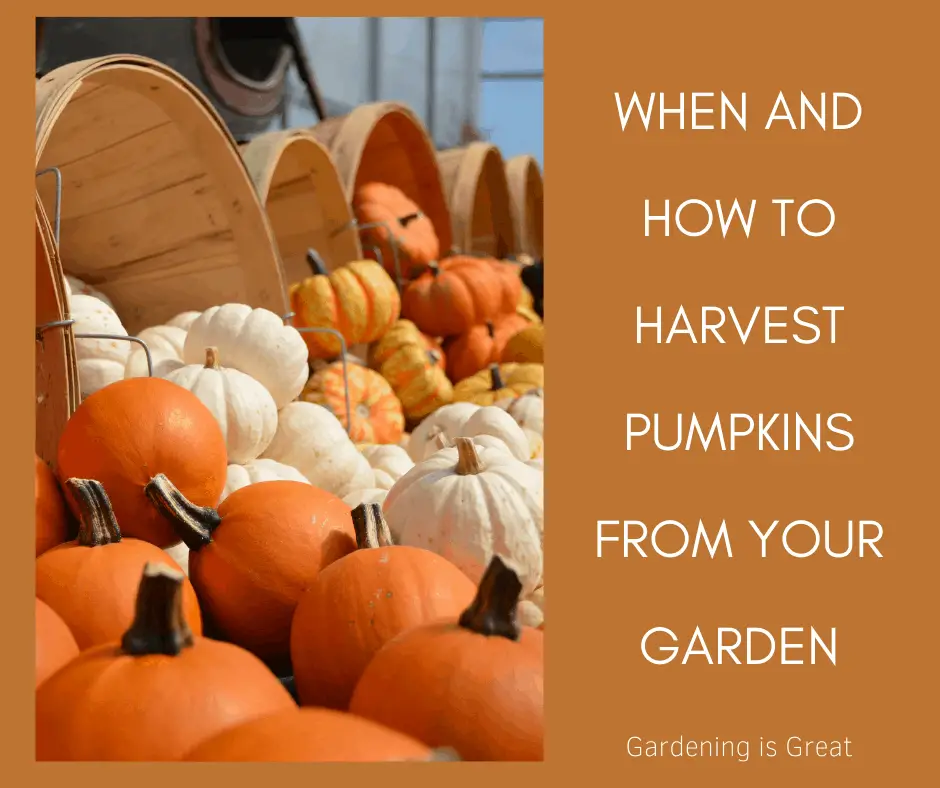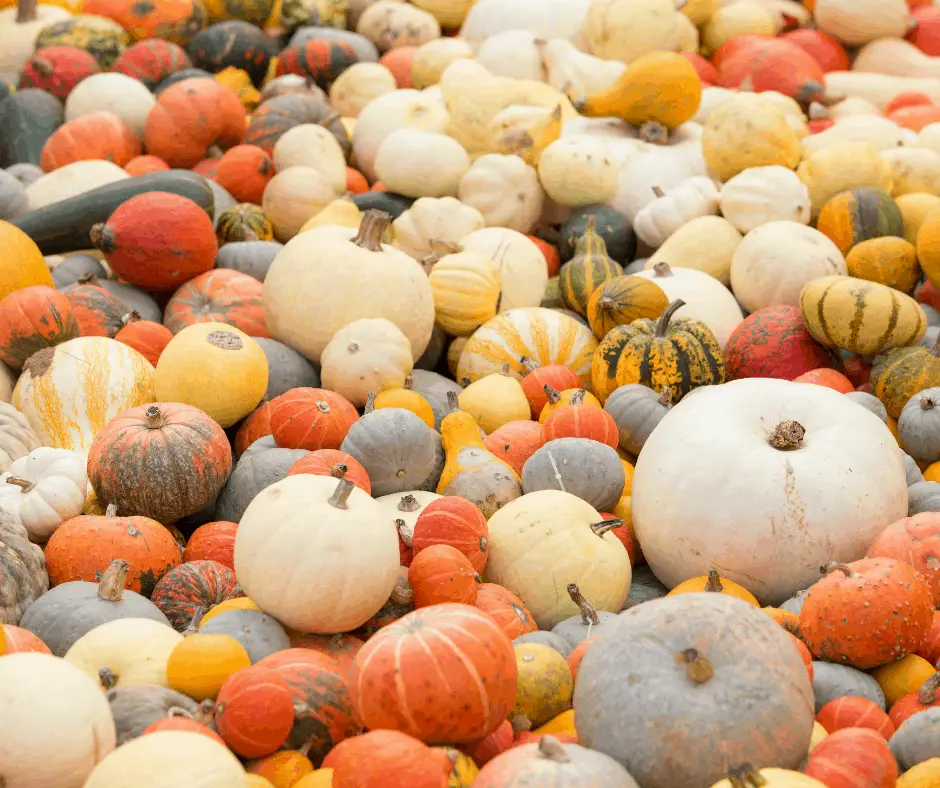When And How To Harvest Pumpkins From Your Garden
If you’ve been dedicated this season to growing pumpkins, you’ll know it’s no easy task. They require a lot of patience, effort, and maintenance to grow from a seed to a pumpkin.
All those months of watering your pumpkins daily, pinching excess vines and flowers, and taking care not to bruise your pumpkins are about to be rewarded.
The growing season is over and it’s time to harvest your pumpkins!
Harvesting pumpkins should be the easy part. But pumpkins are easy to bruise and rot if not harvested properly. Harvested the right way, and your pumpkins could last up to six months.
Here is your guide for when and how to harvest pumpkins from your garden, the right way.

When to Harvest Pumpkins
Pumpkins start to become ready for harvest in September and October. It does depend upon when you planted them along with their variety. But, if you planted your pumpkin seeds in March/April, they will be ready in the Fall.
Check your pumpkins are fully colored and have hard skin. You may also notice the stem begin to dry and start shriveling.
Finally, knock your pumpkins gently. If they sound hollow, there is a good chance your pumpkins are ripe. Check the skin by pressing your nail into it. If it does not puncture, your pumpkins are ready.
A quick note not to base whether a pumpkin is ready to pick on the color. Pumpkins do not have to be orange all over to be ripe.
Some gardeners have even found some of their ripe pumpkins are still green. So it is best to use a combination of methods to confirm whether your pumpkins are ready for harvesting or not.
How to Harvest Pumpkins From Your Garden
Once you have confirmed your pumpkins are ripe and ready to be picked, it’s time to harvest them.

To harvest pumpkins, you need:
- A sharp garden knife or pruners
- Cardboard
- Dry weather
- Bleach solution (1 part bleach, 10 parts water)
First, use your sharp knife to cut your pumpkin. Ensure to leave a few inches of stem attached to your pumpkin. This helps to prevent diseases and slow down any rotting.
Be careful when handling your pumpkins. They can bruise incredibly easily and then will not last as long.
Next, you need to clean the outside of your pumpkins. This helps to remove any unwanted bacteria that might cause your pumpkins to decay.
You can wash your pumpkins with the bleach solution. Use a cloth and remember to wear gloves so the bleach does not come into contact with your skin. Wipe the outside of your pumpkins to disinfect them. Leave your pumpkins out in the sun which will dry them and remove any remaining bleach.
Finally, to help your pumpkins last as long as possible until you are ready to use them, they need curing. Your pumpkins should be placed on cardboard so they are off the ground and left in direct sunlight for a week. This helps to harden their skin and seal the cut stem.
Storing Tips for Your Pumpkins
When your pumpkins are disinfected and cured, it is time to store them until you need to use them either for cooking or Halloween.
Pumpkins need to be stored in a cool, dry place out of the sunlight. This helps them to last longer. With proper care and storage, your pumpkins can last up to 6 months.
FAQs For Harvesting Pumpkins
What month do you harvest pumpkins?
The best months to harvest pumpkins are in September and October. The weather is still relatively dry and cool, but not too cold for frost which can ruin your pumpkins.
Do pumpkins grow back after being picked?
Pumpkins do not grow back after you have harvested them. However, you can dry the seeds from your pumpkins to replant the following season.
Can you eat a pumpkin straight after picking?
Yes, you can! Once your pumpkins are ripe, they just require disinfecting and then can be used immediately. Pumpkins are excellent eaten in stews, soups, mashed, or roasted for salads.
Can you leave pumpkins on the vine too long?
Ideally, you want to harvest your pumpkins when they are ripe. Leaving them on the vine after they have ripened leaves them susceptible to rot, mold, or frosts. If this happens, your pumpkins will not be suitable to eat.
Once your pumpkins have reached their maximum growth and are ripe, the vine also will begin the shrivel. The plant itself dies and will no longer provide any nutrients to your pumpkins. After removing your pumpkins, you can pull up the vines and compost them.
How do you store pumpkins after harvesting?
Pumpkins are best stored in a cool, dry, and dark place e.g. a cellar. Remember to leave a few inches of stalk on your pumpkins and cure them in the sun before storing them. This helps to protect them from rot and harden the skin so that they stay fresh for longer.
How can you tell if a pumpkin is ripe?
There are a few ways you can tell if a pumpkin is ripe and it is best to use a combination of them:
- Check if it has full color.
- Is the skin hard? You can press your nail along the skin. If it doesn’t pierce then your pumpkin is ripe.
- Knock the pumpkin to hear if it sounds hollow
- Has the stem and leaves around the pumpkin begun to shrivel?
Using these methods will help you tell if your pumpkins are ripe and ready to harvest.

This post will help you feel more confident about how to check your pumpkins for harvesting and when to pick them. Follow each step incorporating picking, cleaning, curing, and storing to ensure your pumpkins last longer.
Want to grow more fruit and vegetables? Take a look at some of our top growing guides:

